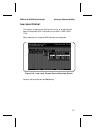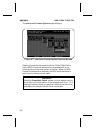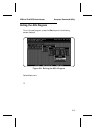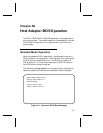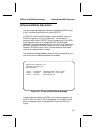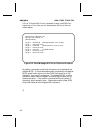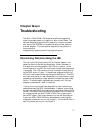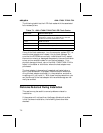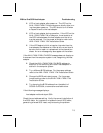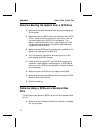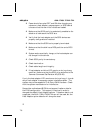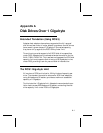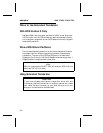
Chapter Seven
Troubleshooting
The AHA-1740A/1742A/1744 executes a self-test diagnostics
when the system power is turned on or after a Hard Reset. The
self-test diagnostics tests the CPU operation, performs a check-
sum test on the EPROM and checks the data transfer paths on
the host adapter. The host system diagnostics may perform a
more extensive
diagnostics by reading and writing data to memory.
Determining Problems Using the LED
The red Light-Emitting Diode (LED) on the host adapter indi-
cates the result of the self-test diagnostic. When the power is
first applied to the host adapter, the LED is turned on. Under
normal operation the LED turns off when the self-test diagnostics
is complete. The LED remains off until the host initiates activity
on the SCSI bus or I/O port. If the self-test diagnostics fails the
LED will flash a code indicating the type of test failure. The LED
will flash once, twice (in rapid succession) or three times (in rapid
succession) followed by a longer pause to indicate the type of test
failure. The flash code is repeated continuously until the host
adapter is powered-off, reset, or repaired.
If you are running the self-test diagnostic for fault-isolation pur-
poses disconnect the SCSI interface cable. However, ensure that
at least one set of SCSI terminators are installed on the last SCSI
device. If the SCSI terminators are not present the LED remains
on; indicating that the AHA-1740A/1742A/1744 is receiving an
active RST signal. Continuous execution of the self-test diagnos-
tics on the AHA-1740A/1742A can be enabled by inserting the
diagnostic jumper pair on pin 4 of jumper 6. For the AHA-1744 in-
sert the jumper pair on pin 4 of jumper 5.
7-1



